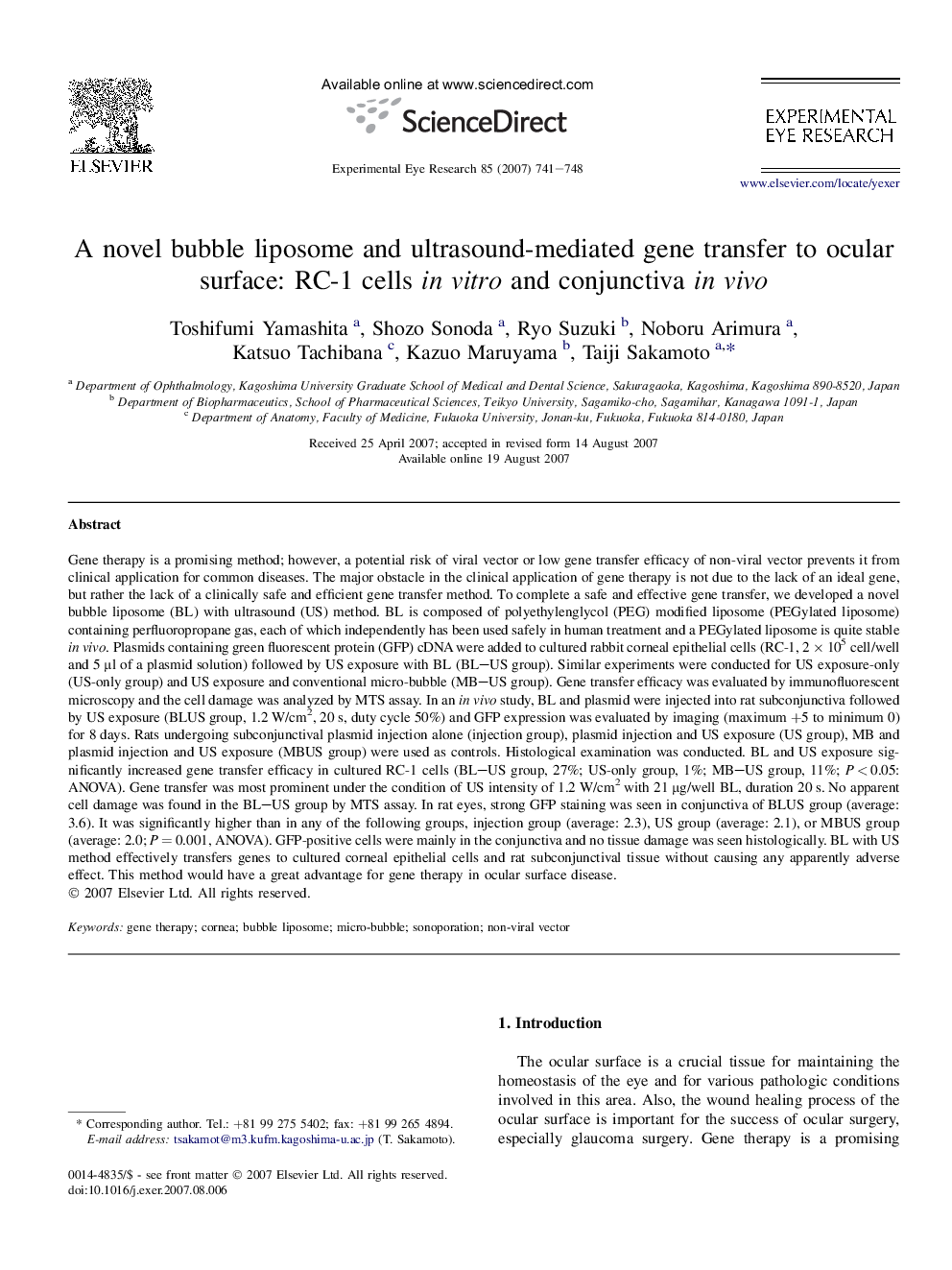| کد مقاله | کد نشریه | سال انتشار | مقاله انگلیسی | نسخه تمام متن |
|---|---|---|---|---|
| 4012836 | 1261216 | 2007 | 8 صفحه PDF | دانلود رایگان |

Gene therapy is a promising method; however, a potential risk of viral vector or low gene transfer efficacy of non-viral vector prevents it from clinical application for common diseases. The major obstacle in the clinical application of gene therapy is not due to the lack of an ideal gene, but rather the lack of a clinically safe and efficient gene transfer method. To complete a safe and effective gene transfer, we developed a novel bubble liposome (BL) with ultrasound (US) method. BL is composed of polyethylenglycol (PEG) modified liposome (PEGylated liposome) containing perfluoropropane gas, each of which independently has been used safely in human treatment and a PEGylated liposome is quite stable in vivo. Plasmids containing green fluorescent protein (GFP) cDNA were added to cultured rabbit corneal epithelial cells (RC-1, 2 × 105 cell/well and 5 μl of a plasmid solution) followed by US exposure with BL (BL–US group). Similar experiments were conducted for US exposure-only (US-only group) and US exposure and conventional micro-bubble (MB–US group). Gene transfer efficacy was evaluated by immunofluorescent microscopy and the cell damage was analyzed by MTS assay. In an in vivo study, BL and plasmid were injected into rat subconjunctiva followed by US exposure (BLUS group, 1.2 W/cm2, 20 s, duty cycle 50%) and GFP expression was evaluated by imaging (maximum +5 to minimum 0) for 8 days. Rats undergoing subconjunctival plasmid injection alone (injection group), plasmid injection and US exposure (US group), MB and plasmid injection and US exposure (MBUS group) were used as controls. Histological examination was conducted. BL and US exposure significantly increased gene transfer efficacy in cultured RC-1 cells (BL–US group, 27%; US-only group, 1%; MB–US group, 11%; P < 0.05: ANOVA). Gene transfer was most prominent under the condition of US intensity of 1.2 W/cm2 with 21 μg/well BL, duration 20 s. No apparent cell damage was found in the BL–US group by MTS assay. In rat eyes, strong GFP staining was seen in conjunctiva of BLUS group (average: 3.6). It was significantly higher than in any of the following groups, injection group (average: 2.3), US group (average: 2.1), or MBUS group (average: 2.0; P = 0.001, ANOVA). GFP-positive cells were mainly in the conjunctiva and no tissue damage was seen histologically. BL with US method effectively transfers genes to cultured corneal epithelial cells and rat subconjunctival tissue without causing any apparently adverse effect. This method would have a great advantage for gene therapy in ocular surface disease.
Journal: Experimental Eye Research - Volume 85, Issue 6, December 2007, Pages 741–748